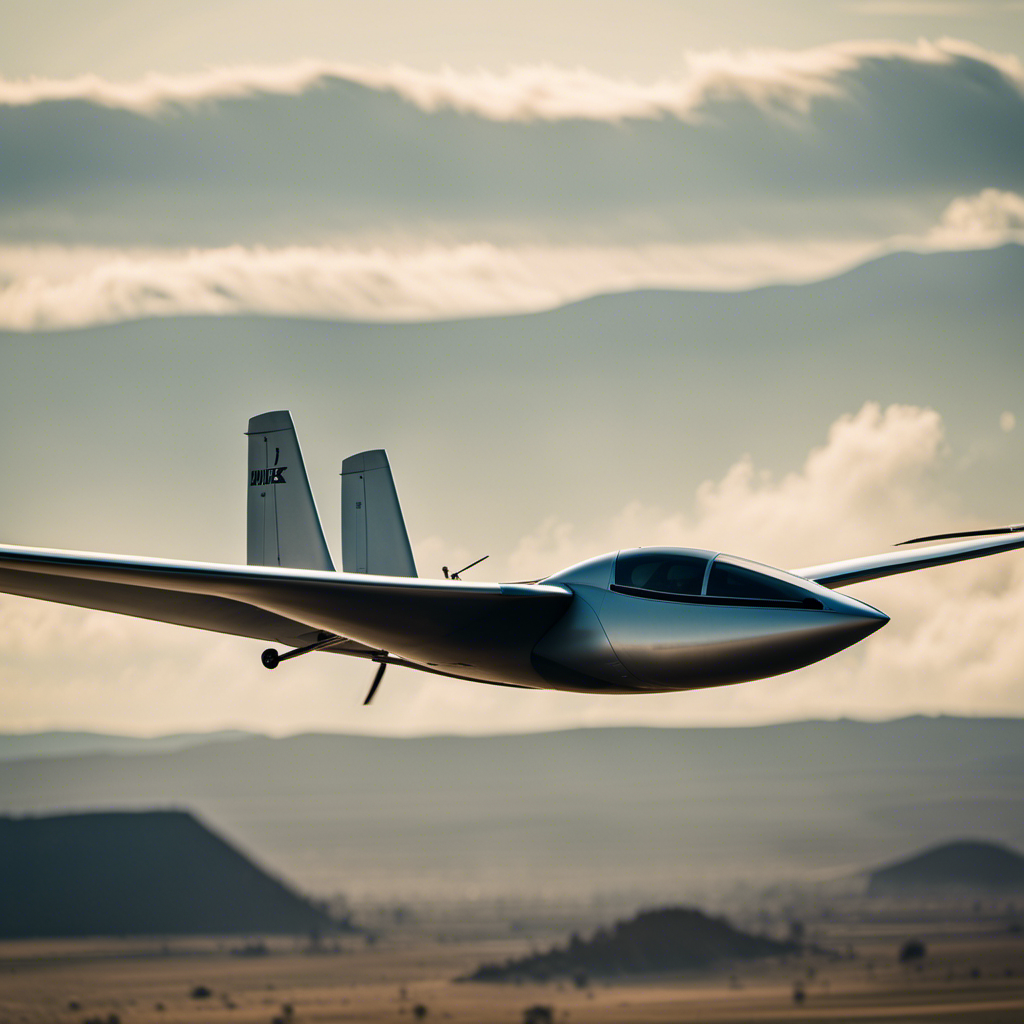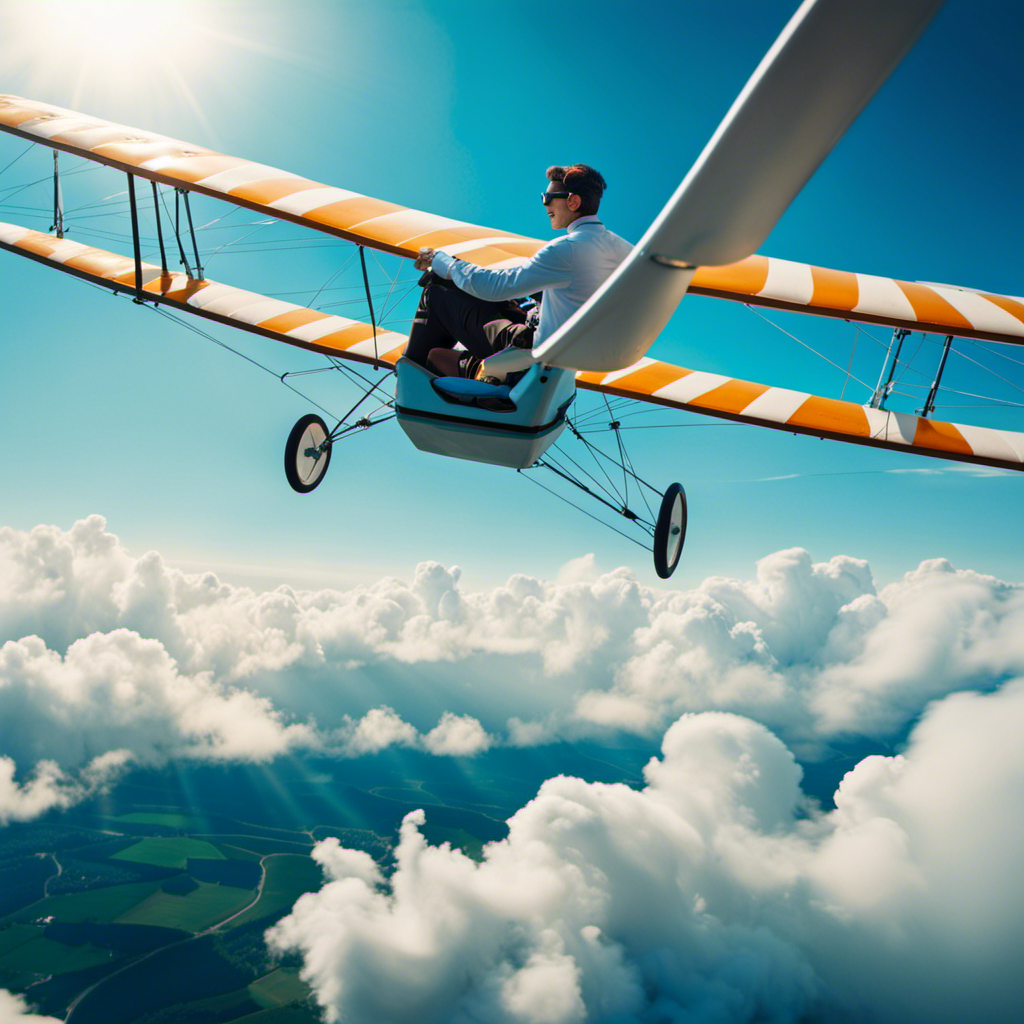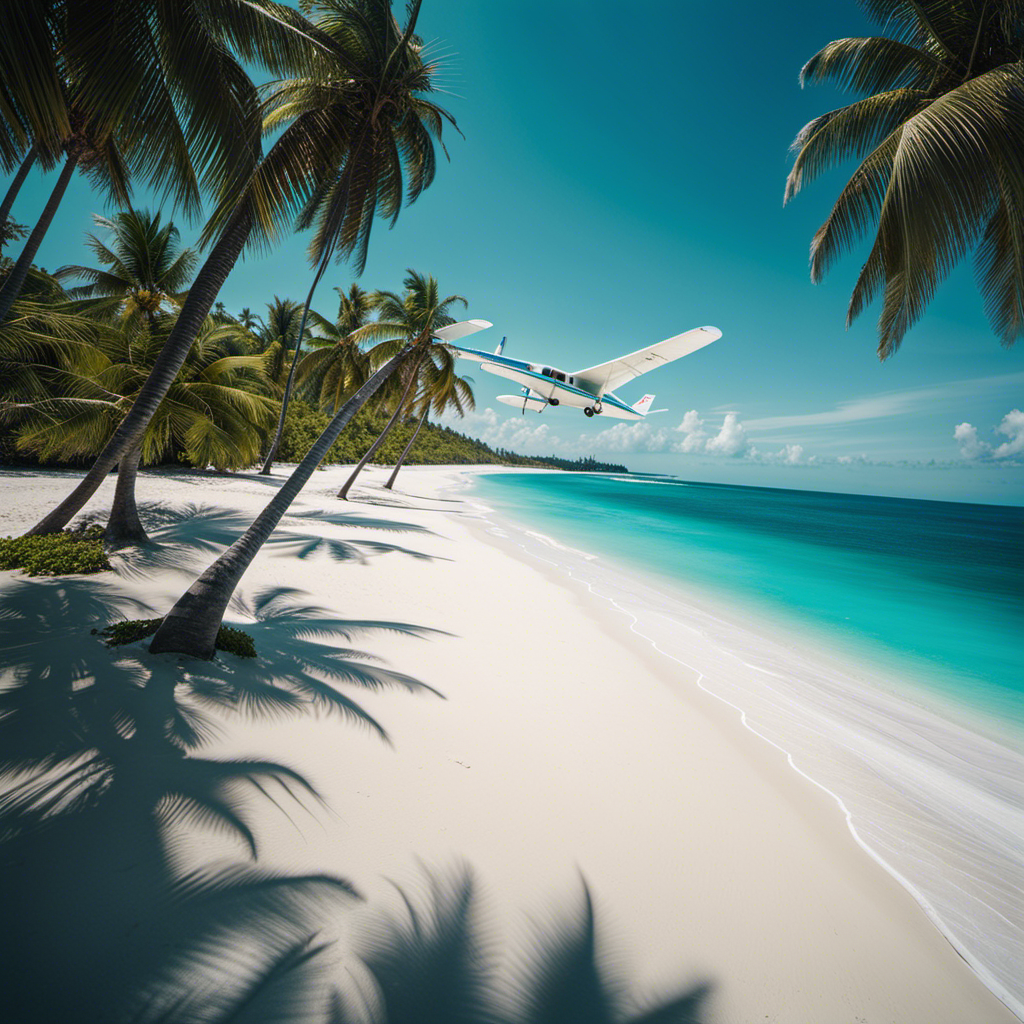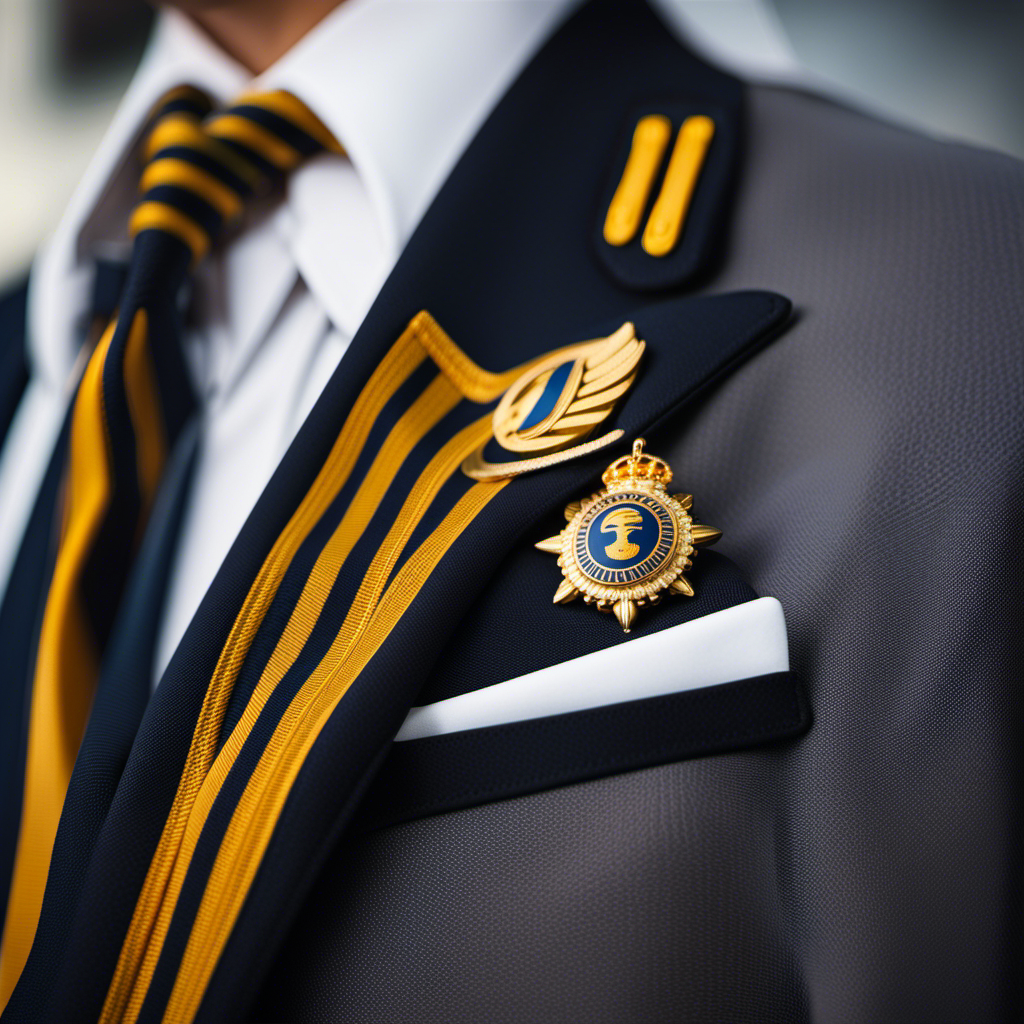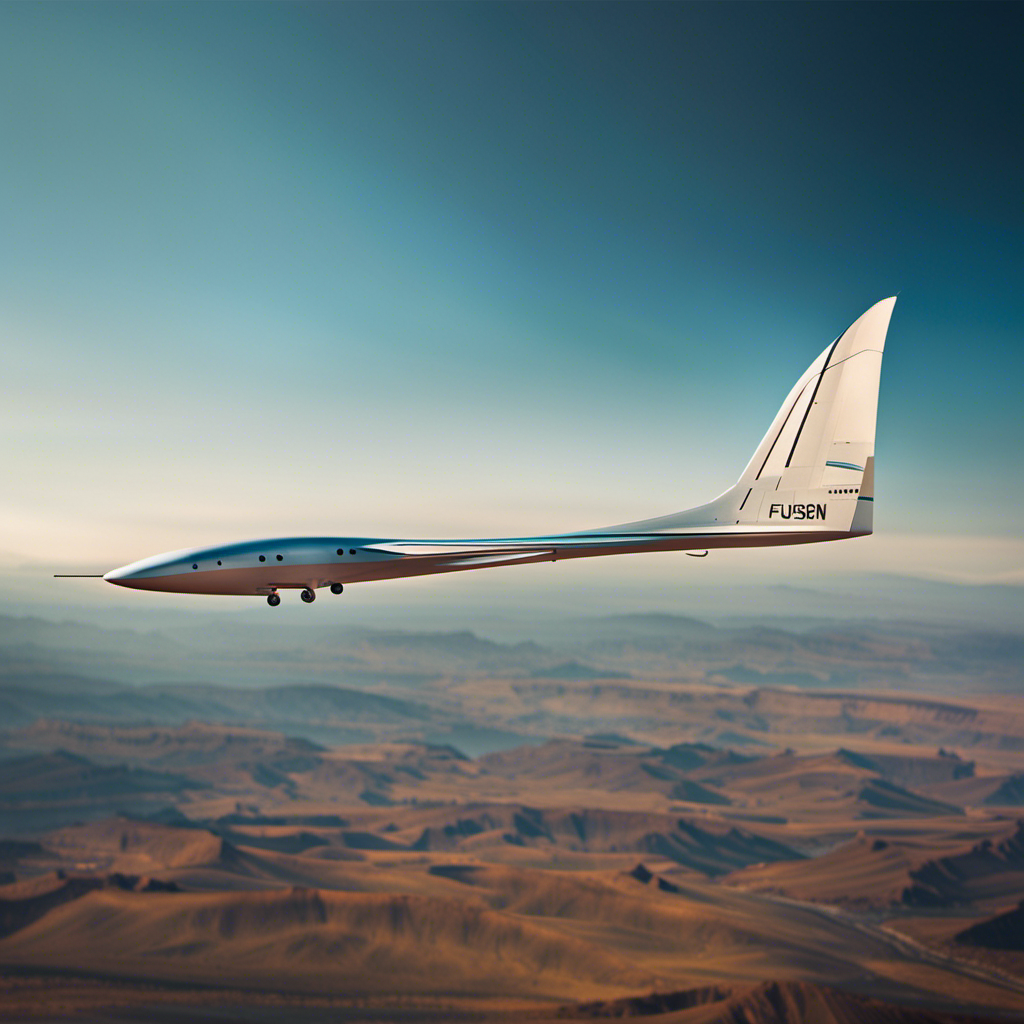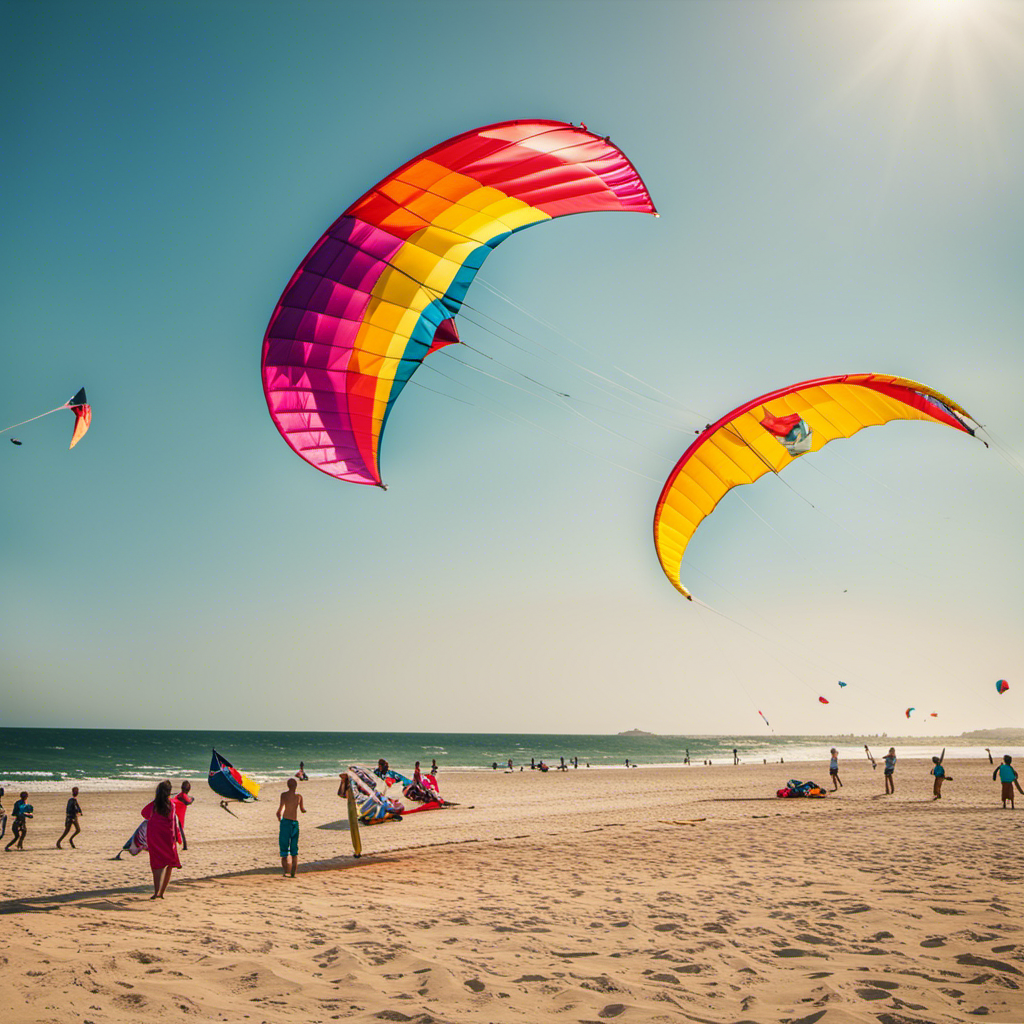As a passionate glider pilot, I have always been fascinated by the intricacies of how gliders function. It is truly amazing how these motorless aircraft can gracefully glide through the air.
In this article, we’ll delve into the mechanics of glider flight, exploring the role of gravity, the impact of air currents, and the importance of wing design. We’ll also discuss the concept of lift and how it keeps gliders aloft.
So buckle up, because we’re about to unravel the secrets behind the awe-inspiring world of glider aviation.
Key Takeaways
- Deep understanding and effective application of aerodynamic principles are essential in glider operations.
- Regular maintenance inspections and adherence to safety measures are crucial for minimizing risks and ensuring safe landings.
- The future of glider technology involves continuous evolution of safety measures, adaptation to new techniques and equipment, and embracing sustainable practices.
- Glider design is focused on sustainability, exploration of alternative power sources, lightweight materials, advanced navigation systems, and autonomous capabilities.
The Basics of Glider Flight
The basics of glider flight involve understanding how air currents and gravity work together. Glider control is achieved through a combination of aerodynamic principles and pilot input.
Aerodynamics plays a crucial role in the flight of a glider. Lift, the force that counteracts gravity and keeps the glider aloft, is generated by the shape of the wings and the angle of attack. By adjusting the control surfaces, such as the ailerons and elevator, the pilot can manipulate the glider’s flight path. Understanding the principles of lift and drag allows the pilot to make precise adjustments to achieve desired maneuvers.
Additionally, the pilot must be mindful of weight distribution and center of gravity to maintain stability during flight.
Transitioning to the role of gravity in glider flight, the force of gravity acts on the glider, constantly pulling it downward.
The Role of Gravity in Glider Flight
Gravity is essential for glider flight to occur. When a glider is released from a launching point, it begins to descend due to the force of gravity. As it descends, the glider generates lift through the shape of its wings and the airfoil design. This lift opposes the force of gravity and allows the glider to stay aloft.
However, the role of air resistance cannot be ignored. Air resistance, also known as drag, acts in the opposite direction of the glider’s motion and can slow it down. The impact of wind speed is crucial in determining the amount of air resistance the glider experiences. Strong headwinds can increase drag and make it more challenging for the glider to maintain its altitude. On the other hand, tailwinds can decrease drag and provide an extra boost to the glider’s speed.
Understanding the interplay between gravity, air resistance, and wind speed is vital in comprehending glider flight. Moving forward, we will explore how air currents affect glider flight.
How Air Currents Affect Glider Flight
When air currents change, they can significantly impact the performance of a glider. Understanding the behavior of these air currents is crucial for glider pilots.
Thermals, for example, are upward drafts of warm air that glider pilots can use to gain altitude. They form when the sun heats the ground, causing the air above it to rise. By circling within a thermal, pilots can climb higher and stay aloft for longer periods of time.
On the other hand, downdrafts are downward currents of air that can lead to a loss of altitude. Turbulence, characterized by irregular and unpredictable air movements, can also pose challenges to glider pilots.
These air current dynamics highlight the importance of wings in glider design, as they enable the glider to efficiently respond to and utilize these varying conditions without the need for an engine.
The Importance of Wings in Glider Design
Understanding how air currents affect glider flight is crucial for pilots, as it allows them to utilize thermals and avoid downdrafts. Glider wing design plays a vital role in harnessing these air currents and achieving efficient flight. Here are four key aspects of glider wing design that contribute to the aerodynamics of glider flight:
-
Wingspan: A longer wingspan increases lift and improves glider performance by providing a larger surface area for air to flow over.
-
Wing Shape: Glider wings are typically designed with a curved upper surface and a flatter lower surface, creating a pressure difference that generates lift.
-
Aspect Ratio: The ratio of wingspan to average chord length, known as aspect ratio, affects the glider’s efficiency and maneuverability. Higher aspect ratios result in higher lift-to-drag ratios.
-
Winglets: These small, vertical extensions at the wingtips reduce drag caused by wingtip vortices, improving glider efficiency.
Understanding the principles of glider wing design and how it impacts flight is essential for pilots to grasp the concept of lift and how it keeps gliders aloft.
The Concept of Lift and How it Keeps Gliders Aloft
Lift is what keeps gliders in the air and allows them to soar through the sky. Understanding lift mechanics is essential in comprehending how gliders work.
Lift is generated by the interaction between the glider’s wings and the air. This interaction is governed by the principles of aerodynamics. As the glider moves through the air, the shape of its wings and the angle at which they meet the oncoming airflow create a pressure difference. This pressure difference results in an upward force called lift.
The wings of a glider are specifically designed to maximize lift by utilizing airfoil shapes and wingtip devices. By manipulating these factors, glider pilots can control the amount of lift and maintain their desired altitude.
Now, let’s delve into understanding drag and its impact on glider performance.
Understanding Drag and its Impact on Glider Performance
To maximize your glider’s performance, you need to be aware of the impact drag has on it. Drag is the force that opposes the motion of an object through a fluid, in this case, the air. It is essential to minimize drag in order to increase the efficiency and speed of your glider. Two factors that greatly affect drag are altitude and temperature. As altitude increases, the air density decreases, resulting in lower drag. This is because there are fewer air molecules to interact with the glider. Similarly, temperature also affects air density. As temperature increases, air density decreases, resulting in lower drag. Understanding the impact of altitude and temperature on drag is crucial for optimizing your glider’s performance.
| Factor | Impact on Drag |
|---|---|
| Altitude | Decreases |
| Temperature | Decreases |
Considering the impact of altitude and temperature on drag, it is important to understand the role of weight and balance in glider flight.
The Role of Weight and Balance in Glider Flight
The role of weight and balance in glider flight is crucial for maintaining stability and control. Proper weight distribution is essential to ensure that the glider remains balanced and responsive to pilot inputs. Stability analysis plays a key role in determining the optimal weight distribution for a glider.
By analyzing the center of gravity and moments of inertia, we can determine the stability characteristics of the glider. Adjusting the position of the ballast, which is used to change the weight distribution, allows pilots to optimize the glider’s stability and control.
It is important to carefully consider weight and balance during pre-flight preparations to ensure safe and efficient flight operations. Understanding the influence of weight and balance on glider flight paves the way for discussing the impact of pilot skill and technique on glider performance.
The Influence of Pilot Skill and Technique on Glider Performance
Now that we understand the importance of weight and balance in glider flight, let’s delve into the influence of pilot skill and technique on glider performance.
Pilot training plays a crucial role in ensuring safe and efficient glider operations. A well-trained pilot possesses a deep understanding of aerodynamic principles and is able to apply them effectively during flight. By mastering key techniques such as maneuvering, speed control, and energy management, pilots can optimize glider performance and enhance their overall flying experience.
They learn to read the air currents and make precise adjustments to maximize lift and minimize drag. With experience and practice, pilots become adept at exploiting the inherent characteristics of gliders to their advantage. This level of skill and technique not only enhances the pilot’s enjoyment of glider flying but also contributes to the safety and success of each flight.
As we explore further, let’s now shift our focus to the safety measures and precautions in glider flying.
Safety Measures and Precautions in Glider Flying
Pilots must carefully adhere to safety measures and precautions in order to ensure a safe and successful glider flight. One crucial aspect of glider safety is regular maintenance. Gliders require routine inspections to ensure that all components are in optimal condition. This includes checking the airframe, control surfaces, and landing gear for any signs of wear or damage.
Additionally, emergency procedures should be thoroughly understood and practiced. Pilots must be prepared for unexpected situations such as a loss of altitude or control. Having a well-established emergency checklist and knowing how to execute it can mean the difference between a safe landing and a disaster.
By prioritizing glider maintenance and being well-versed in emergency procedures, pilots can minimize risks and enjoy the thrill of gliding with confidence.
Transitioning into the subsequent section about the future of glider technology and innovation, it is evident that safety measures and precautions will continue to evolve alongside advancements in glider design and technology.
The Future of Glider Technology and Innovation
To fully embrace the future of glider technology and innovation, you’ll need to stay updated on the latest advancements and adapt to new techniques and equipment.
The future of gliders holds exciting prospects, with advancements in sustainable glider technology leading the way. One area of focus is the development of more efficient and environmentally friendly propulsion systems. Researchers are exploring alternative power sources, such as electric motors and solar panels, to reduce reliance on fossil fuels.
Additionally, aerodynamic improvements are being made to reduce drag and increase glide efficiency. Lightweight materials, like carbon fiber composites, are being used to construct gliders, making them stronger and more agile.
Advanced navigation systems and autonomous capabilities are also being developed to enhance safety and overall performance.
Embracing these future advancements will ensure that gliding remains a sustainable and exhilarating sport for years to come.
Frequently Asked Questions
What types of materials are used in the construction of gliders?
To construct gliders, lightweight materials like carbon fiber and fiberglass are commonly used. These materials provide strength and durability while keeping the overall weight low. The wing design is also crucial, with aerodynamic shapes and efficient lift generation being key considerations.
How are gliders launched into the air?
Gliders are launched using various techniques such as aerotowing, winch launching, and bungee launching. These methods utilize aerodynamic principles to generate lift and propel the glider into the air, allowing it to soar without an engine.
Are there any regulations or restrictions for flying gliders?
There are regulations and safety measures in place for flying gliders. These include rules for airspace usage, pilot qualifications, and equipment inspections. These measures ensure the safe operation of gliders and minimize the risk of accidents.
How long can a glider stay in the air without any power source?
Without any power source, a glider can stay in the air for hours, depending on its maximum altitude and aerodynamics. By utilizing rising air currents and skillful piloting techniques, gliders can achieve long flight durations.
What are some common challenges faced by glider pilots during flight?
During flight, glider pilots face common challenges such as adverse weather conditions and the need to use precise navigation techniques. The ability to accurately read weather patterns and make strategic navigation decisions is crucial for a successful flight.
Conclusion
In conclusion, gliders are fascinating aircraft that rely on the principles of flight to soar through the skies. By harnessing the power of air currents and utilizing the design of their wings, gliders are able to stay aloft without the need for an engine.
The pilot’s skill and technique play a crucial role in the performance of a glider, while safety measures and precautions ensure a smooth and secure flight.
As technology continues to advance, the future of gliders holds exciting possibilities for innovation and improvement.
So, if you’re ready to take to the skies and experience the freedom of glider flight, buckle up and get ready for an adventure like no other!
With a heart that soars as high as the skies, Aria, affectionately known as “Skylark,” is the driving force behind Soaring Skyways. Her journey into the gliding world began as a young dreamer gazing up at the soaring birds, yearning to experience the weightlessness and freedom they embodied. With years of experience both in the cockpit and behind the scenes, Aria’s commitment to the gliding community is unwavering.
